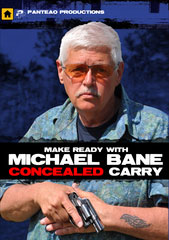They launched a multiple indiscriminate assault on soft targets, and then in the confusion began singling out A-list prey: Not just wealthy Western tourists, but local orthodox Jews, and municipal law enforcement. They drew prominent officials to selected sites, and then gunned down the head of the antiterrorism squad and two of his most senior lieutenants. They attacked a hospital, the place you’re supposed to take the victims to, thereby destabilizing the city’s emergency-response system.There's some other good analysis on the Web (like this from the Canadian National Post), but the short form is that the India attacks are a new paradigm — low-cost, low-tech, high effectiveness.
And, aside from dozens of corpses, they were rewarded with instant, tangible, economic damage to India: the Bombay Stock Exchange was still closed on Friday, and the England cricket team canceled their tour (a shameful act).
What’s relevant about the Mumbai model is that it would work in just about any second-tier city in any democratic state: Seize multiple soft targets and overwhelm the municipal infrastructure to the point where any emergency plan will simply be swamped by the sheer scale of events. Try it in, say, Mayor Nagin’s New Orleans. All you need is the manpower. Given the numbers of gunmen, clearly there was a significant local component. On the other hand, whether or not Pakistan’s deeply sinister ISI had their fingerprints all over it, it would seem unlikely that there was no external involvement. After all, if you look at every jihad front from the London Tube bombings to the Iraqi insurgency, you’ll find local lads and wily outsiders: That’s pretty much a given.
I've been rereading The Prince, the compendium of Jerry Pournelle's Falkenberg Legion saga sliced, diced and repackaged by Pournelle and S. M. Stirling, maybe the best SF writer currently working. It is a wonderful lesson in Terrorism 101, how and why it works and how it might be fought. Obviously, the basic premise — the U.S. and Russia combine forces to rule the earth and colony star systems as the CoDominium — has been overcome by events, but much of the military writing, as updated in 2002 by Pournelle and Stirling, read like headlines. If times produce the man, these times call for John Christian Falkenberg!






4 comments:
And note, India has "gun control" -someone put on the web a Ghandi quote to the effect that "one of the worst things the British did to India was disarm its people" (haven't confirmed quote). Sigh, sheep in slaughtering pens. Of course, the "authorities will take care of it"(!?!). And a resister might get hurt,killed - but the non-resisters do, too. Read Cooper's "To Ride, Shoot Straight and Speak the Truth"...remember the CO church shooting, other schools(MS, WVA), successful resistance...wait, BHO can talk to them!?!
To the best of my knowledge, the Ghandi quote is correct. I remember looking it up when I worked at a library.
‘‘Among the many misdeeds of the British rule in India, history will look upon the act of depriving a whole nation of arms, as the blackest.’’
— Mahatma Ghandi, "Gandhi, An Autobiography", page 446
Victim disarmament zones win again?
Michael, if you really want to see an asymmetric battle brought to conclusion read Michael Z. Williamson's The Weapon. Yes, it is SciFi, but as we know it is easy to couch arguments in in SciFi terms to get a easy perspective. It is damn near a blue print on how to severely foul up a complacent society.
Post a Comment